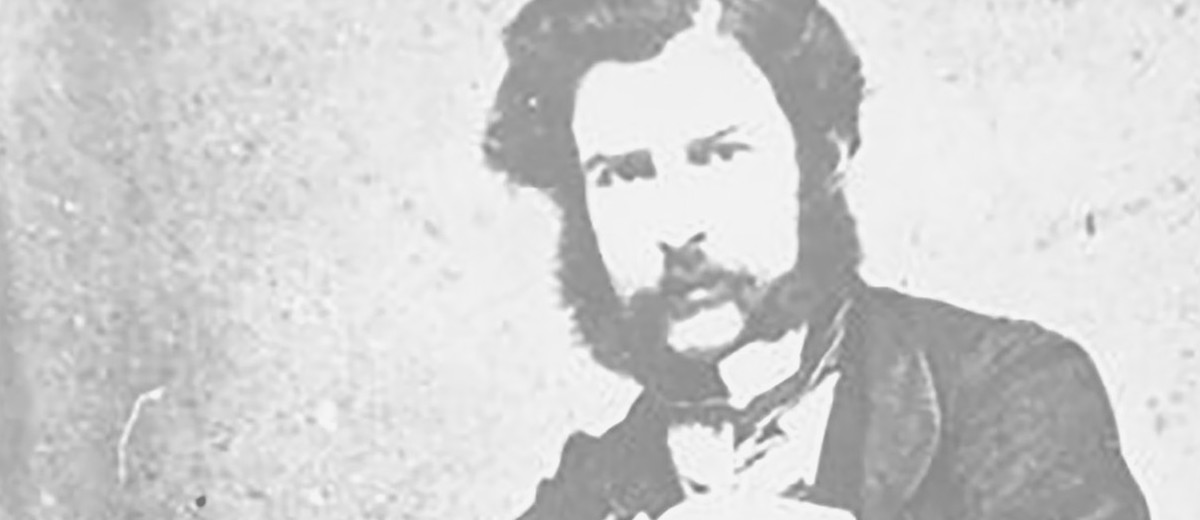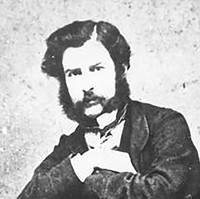Person
ContributeSamuel Thomas Gill was born on 21st May 1818 at Perriton, Somerset, England, the son of Reverend Samuel Gill and his wife Winifred. In about 1833 he completed his formal education and began his art training, also taking up a position with a Plymouth carver and gilder of frames. In December 1839 the family arrived in Adelaide on the Caroline and in March the following year Gill announced in the South Australian Register that he had opened rooms in Gawler Place and was available for commissions.
For twelve years Gill produced lively images of life in early Adelaide and nearby rural areas. In 1844 he made watercolours of the departure of Captain Charles Sturt on his journey to inland Australia. The best-known of these, Sturt’s overland expedition leaving Adelaide, 10th August 1844, shows the boat Sturt took to use on the inland sea that he expected to find. The following year Gill produced a large group of water-colours of Adelaide, Port Adelaide, rural views and mining scenes, mostly as a commission. After this success he accompanied John Ainsworth Horrocks’s 1846 North-West Expedition as its recording artist. Although the venture met with tragedy when Horrocks died after being accidentally shot, the series of works Gill produced from this expedition are among the most important in the state’s art.
In 1847 the first exhibition of work by South Australian colonial artists was held and Gill showed sixty-two paintings and drawings; in the second in 1848, he exhibited ten. The following year Gill began producing lithographs and made a number of topical images including a series of drawings of prominent citizens entitled Heads of the People. In his Adelaide and South Australian scenes he proved himself to be adept at handling a wide range of subjects, including street scenes, houses, rural settings, landscapes, portraiture and even caricature. In early 1852 Gill left for the Victorian goldfields, having created a vast body of work recording the growth of South Australia during its exciting early years.
While he spent a relatively short time at the diggings, Gill’s lively views led to the appellation (on the headstone erected well after his death) of ‘The Artist of the Goldfields’. One of the largest bodies of works he made is his series of forty-eight lithographs entitled Victoria Gold Diggings and Diggers As They Are. In 1853, in Melbourne, Gill exhibited watercolours of the goldfields as well as South Australian scenes and later the same year he began another lithographic series Views in and around Melbourne. In 1856 Samuel Thomas Gill left for Sydney where he made another series, Scenery in and around Sydney, as well as several watercolours of notable Sydney landmarks. He returned to Melbourne in 1864 and lived there for the rest of his life. His Australian Sketchbook became available during the 1860s and his many watercolour views of Melbourne are reminiscent of his crowded Adelaide scenes. In later years, struggling with alcoholism, he frequently repeated earlier subjects. These later works are distinguished by a coarser handling of watercolour and lack the lively freshness of his early works.
S.T. Gill collapsed and died on the steps of the Bourke Street Post Office, Melbourne, on 27th October 1880. He was buried in a common grave in Melbourne General Cemetery but in 1913 his remains were reinterred in a private grave and a headstone was provided by the Royal Historical Society of Victoria. The Art Gallery of South Australia holds a vast collection of his work.
Media
Add mediaImages

Gift of the South Australian Company 1890, Art Gallery of South Australia. Not to be reproduced without permission.

Image courtesy of National Library of Australia NLA: http://nla.gov.au/nla.pic-an23419474-v, Public Domain


Comments
CommentAdd new comment
Is anybody aware of the exact location of Gill's grave in the Melbourne General Cemeterey?
I'm afraid I can't answer that one Graeme but you could try contacting the cemeterey directly to see if anyone there can help: http://mgc.smct.org.au/
I am hoping someone would be able to explain the history why there are two different paintings by Gill of Sturt Leaving for the Inland Sea. Both are a view of the corner of Currie Street and King William St , both have a picket fence in the foreground and two men, but the orientations are slightly different, plus one has a boy sitting on a barrel and the spectators are different, as is the location of Sturts boat? - what would have been the point of changing the painting? - and were they done at the same time?
Grateful for any info
Hi Mark,
That sounds like a question for the curator of Australian Art at the Art Gallery of South Australia: http://www.artgallery.sa.gov.au/agsa/home/Connect/connect.html One of the paintings you refer to is held at the Art Gallery, so they will know much more about it.
I believe I have a Gill, painted in South Australia, it needs a good clean and isn't in a frame, I love it but should be shared not locked away, I'd love to talk to someone and thought here would be a good start, any assistance or advice would be appreciated
That's exciting Derek! You might have a real treasure there. For something like that I'd recommend contacting the curator of Australian art at the Art Gallery of South Australia, they might refer you to a private valuer, but they'll know who is the best person to go to - http://www.artgallery.sa.gov.au/agsa/home/About/
Hi Craig, I will check with our curators here at Kristy Kokegei, History Trust of South Australia as they may be interested in chatting with you.
I have an old display case table with a small tag on it that says S. T. Gill PO PLACE MELBOURNE. If anyone knows any info or is interested in it